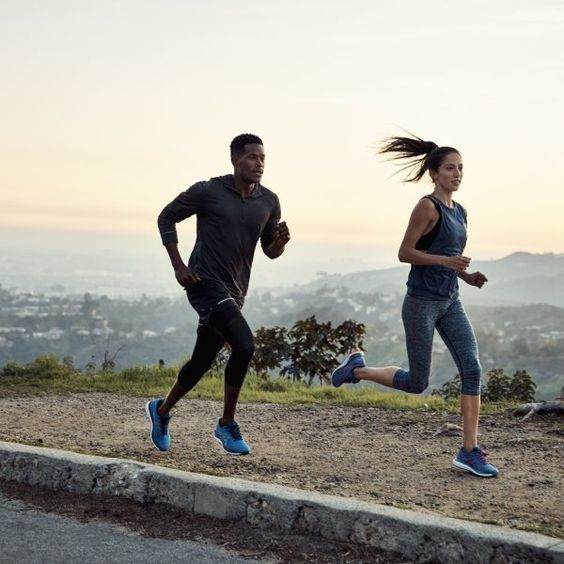YOGA
Yoga is a holistic practice that encompasses physical postures, breathing exercises, meditation, and ethical principles aimed at promoting overall health and well-being. It has its origins in ancient India and has evolved over thousands of years into various styles and forms. Here are some key aspects of yoga:

Advantages of Yoga:
Physical Health Benefits:
- Improved flexibility, strength, and balance.
- Enhanced posture and body awareness.
- Relief from chronic pain conditions, such as back pain or arthritis.
- Better cardiovascular health through certain yoga styles.
- Mental and Emotional Well-Being:
Stress reduction and relaxation.
- Improved focus, concentration, and mental clarity.
- Enhanced emotional regulation and reduced anxiety and depression symptoms.
- A sense of calm and inner peace.
Holistic Wellness:
Promotes overall well-being by addressing physical, mental, and emotional aspects of health.
Encourages a healthier lifestyle, including better eating habits and self-care practices.
May aid in weight management and digestion.
Accessible to Many People:
Yoga can be adapted for various fitness levels and physical abilities.
It can be practiced at home or in a group setting, making it widely accessible.
Spiritual and Philosophical Growth:
For those interested, yoga offers a path for spiritual exploration and self-realization.
It provides a framework for ethical living and personal development through its philosophical teachings.
Disadvantages or Limitations of Yoga:
Physical Injury Risk:
Without proper guidance or overzealous practice, yoga poses can lead to injuries, especially for beginners.
Existing physical conditions or limitations may require modifications or avoidance of certain poses.
Time and Commitment:
Consistent practice is necessary to reap the benefits of yoga, which may require a significant time
commitment:
Finding time for regular practice can be challenging for some people.
Instructor Quality:
The quality of instruction varies widely, and a poorly trained instructor can lead to incorrect postures or alignment, increasing the risk of injury.
Cost:
Attending yoga classes, especially at studios, can be expensive, which may limit access for some individuals.
Spiritual or Philosophical Conflicts:
Some individuals may have religious or philosophical beliefs that conflict with certain aspects of yoga, such as its spiritual or meditative components.
Not a Quick Fix:
Yoga is generally a gradual practice, and it may take time to see significant improvements in physical or mental health.
Not Suitable for All Health Conditions:
Certain medical conditions or physical limitations may make some yoga poses or styles unsuitable or potentially risky.
\
Competitiveness:
In some yoga classes or communities, there can be an unhealthy sense of competition or comparison among participants, which goes against the principles of yoga.
ASANAS
Asanas are physical postures or poses used in yoga practice. They are a fundamental component of yoga and are typically performed with the goal of improving physical health, flexibility, strength, and balance. There are hundreds of yoga asanas, each with its unique benefits and variations. Here are some commonly practiced yoga asanas:
TYPES OF ASANAS:
1.Tadasana (Mountain Pose): This is a foundational standing pose that focuses on improving posture and alignment.
2.Adho Mukha Svanasana (Downward-Facing Dog Pose): This is a popular yoga pose that stretches and strengthens the entire body, particularly the arms, legs, and back.
3.Uttanasana (Forward Fold): This forward-bending pose stretches the hamstrings and lower back while promoting relaxation.

4.Urdhva Mukha Svanasana (Upward-Facing Dog Pose): This backbend helps to open the chest and strengthen the arms and back.
5.Balasana (Child's Pose): A resting pose that provides a gentle stretch to the lower back and promotes relaxation.
6.Virabhadrasana I (Warrior I Pose): This pose strengthens the legs and opens the hips, chest, and arms.
7.Virabhadrasana II (Warrior II Pose): A standing pose that focuses on building strength and stability in the legs while opening the hips.
8.Savasana (Corpse Pose): The final relaxation pose, often practiced at the end of a yoga session, promotes deep relaxation and stress reduction.
9.Sirsasana (Headstand): An advanced inversion that requires balance and strength. It's often called the "king of asanas."
10.Bakasana (Crow Pose): An arm balance that challenges arm and core strength while improving balance and concentration.

11.Sukhasana (Easy Pose): A comfortable seated posture used for meditation and pranayama (breathing exercises). 12.Halasana (Plow Pose): A forward-bending inversion that stretches the spine and shoulders.
12.Halasana (Plow Pose): A forward-bending inversion that stretches the spine and shoulders. 13.Dhanurasana (Bow Pose): This backbend strengthens the back and opens the chest and shoulders.
13.Dhanurasana (Bow Pose): This backbend strengthens the back and opens the chest and shoulders.
14.Padmasana (Lotus Pose): A seated posture for meditation and pranayama, known for its spiritual significance.
15.Ardha Matsyendrasana (Half Lord of the Fishes Pose): A seated twist that improves spinal flexibility and digestion.
16.Vrikshasana (Tree Pose): A balance pose that strengthens the legs and enhances concentration.
17.Navasana (Boat Pose): A core-strengthening pose that works the abdominal muscles.
18.Gomukhasana (Cow Face Pose): A seated pose that stretches the shoulders and hips.
19.Trikonasana (Triangle Pose): A standing pose that stretches the legs, hips, and torso.
20.Garudasana (Eagle Pose): A standing pose that challenges balance and flexibility, particularly in the arms and legs.

 12.Halasana (Plow Pose): A forward-bending inversion that stretches the spine and shoulders.
12.Halasana (Plow Pose): A forward-bending inversion that stretches the spine and shoulders. 13.Dhanurasana (Bow Pose): This backbend strengthens the back and opens the chest and shoulders.
13.Dhanurasana (Bow Pose): This backbend strengthens the back and opens the chest and shoulders.






















